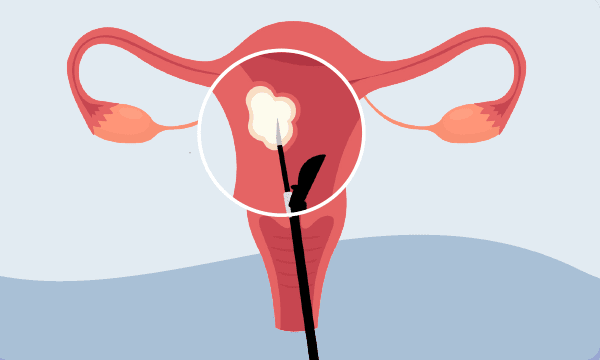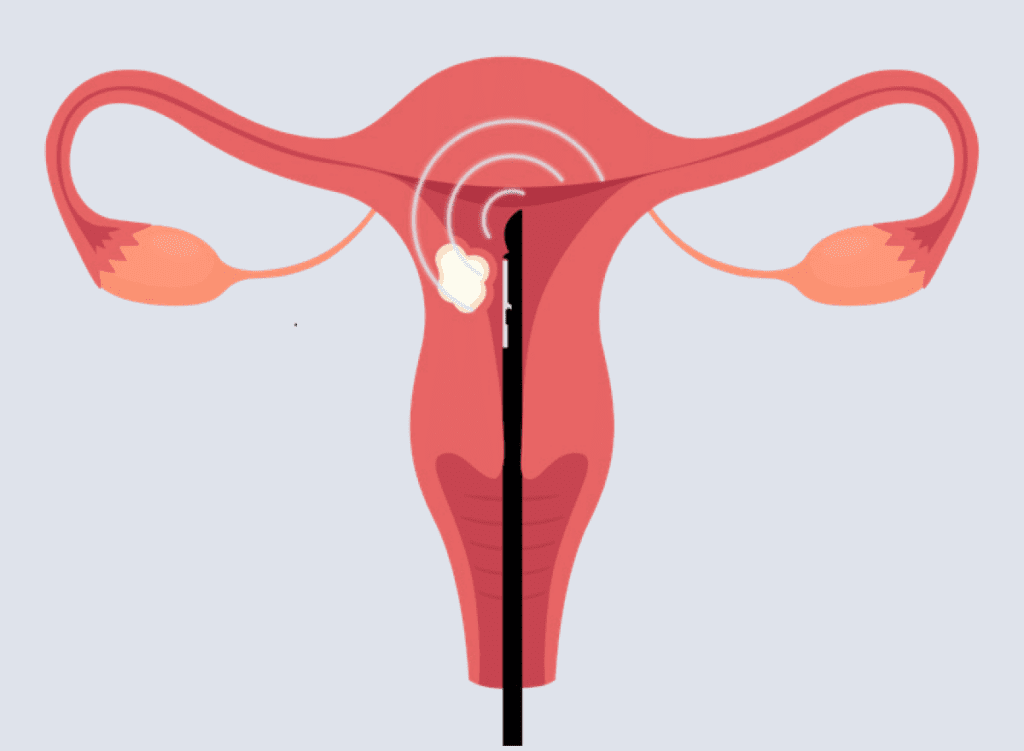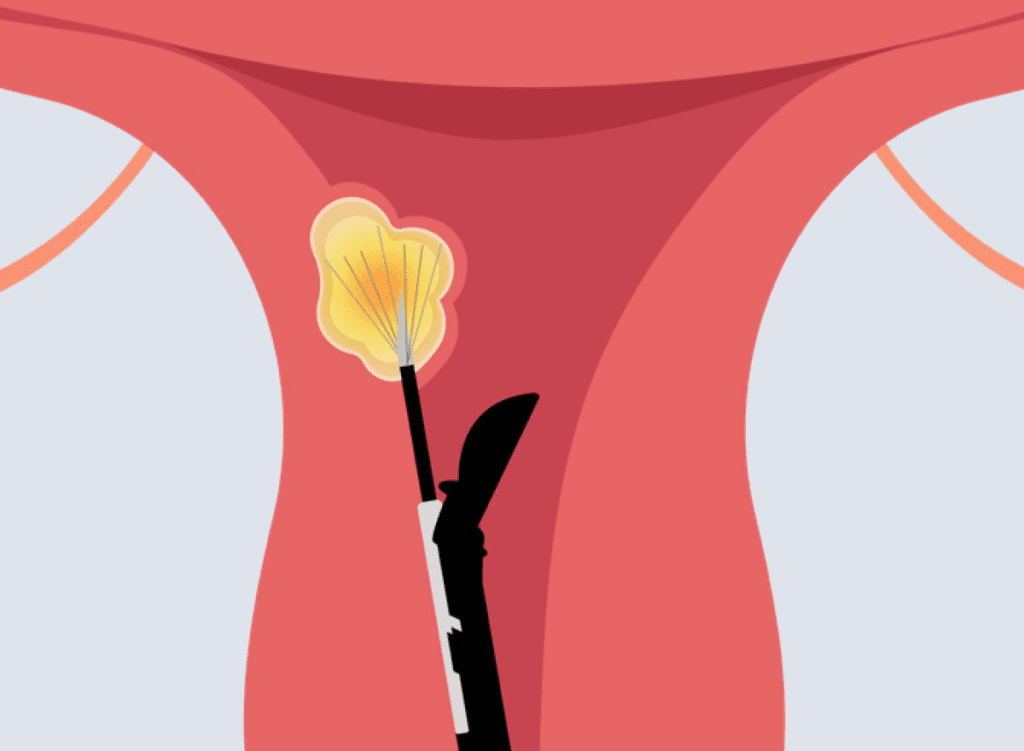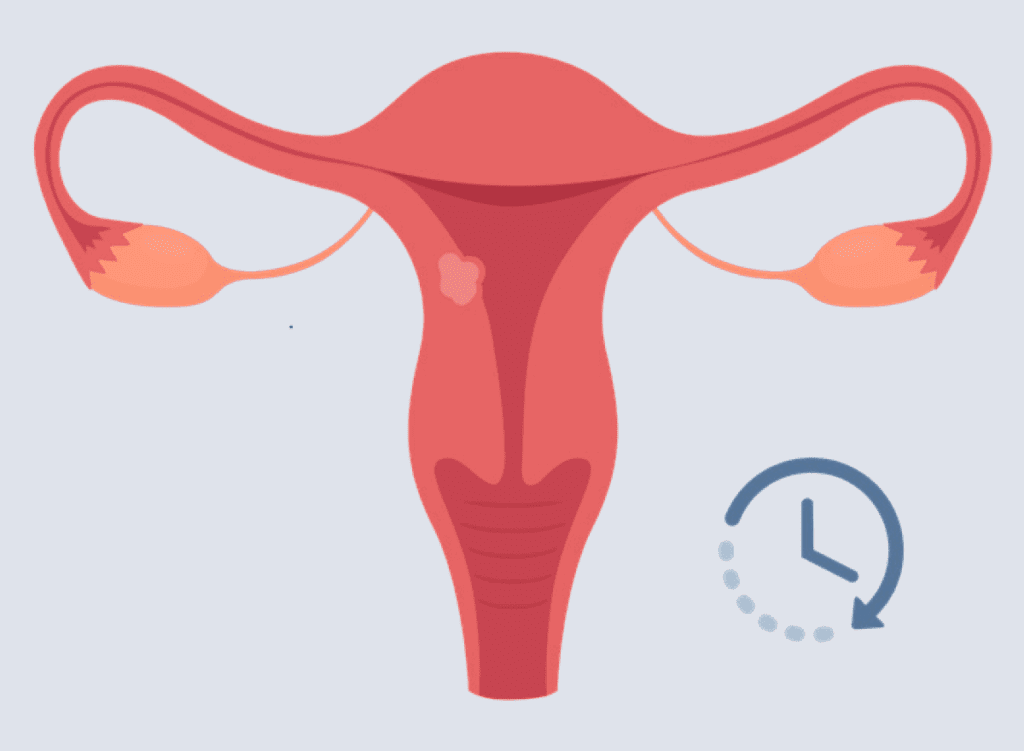Sonata® Transcervical Fibroid Ablation
An incisionless solution for fibroid relief.
A better life is possible with the minimally-invasive, uterine-sparing Sonata procedure, clinically proven to reduce fibroid symptoms, including heavy menstrual bleeding.1

Fibroids, meet your match
You’re not alone. Up to 77% of women will develop
fibroids in their lifetime.2
Sonata fibroid ablation is an outpatient procedure that typically takes less than an hour3 and offers an incisionless, non-hormonal solution for symptomatic fibroids. Sonata treats fibroids with targeted radiofrequency energy from inside the uterus, so there’s no cutting or scarring. Patients treated with Sonata reported fast recovery, with many returning to normal activities the next day.4
Get back to better with Sonata.

Symptoms of fibroids
Heavy menstrual bleeding
Abdominal bloating and cramping
Pelvic, back and leg pain
Pain during sex
Frequent urination
Fatigue

Better starts here
Over 15,000 women have chosen the Sonata
procedure to find relief from symptomatic fibroids.5
Sonata is an outpatient procedure that can be performed anytime during your cycle, even during your period.
The Sonata procedure, at-a-glance

Sonata is an incisionless, non-hormonal procedure that uses targeted heat to shrink fibroids, relieving symptoms over time while keeping your uterus intact.
Could the Sonata procedure be right for you?
What does it treat?
Most symptomatic uterine fibroids
Who is a candidate?
A doctor can help determine if Sonata is right for treating your fibroid symptoms
How does it work?
Targeted heat is used to shrink fibroids
How long does it take?
Less than an hour, depending on the size and number of fibroids
Sonata Treatable Fibroids
Fibroids are noncancerous tumors that grow in or around the uterus and are classified by their location. The Sonata procedure treats fibroids from inside the uterus, including intramural, submucosal and some subserosal fibroids.
| Fibroid type | Uterus location |
|---|---|
| A. Subserosal fibroid | On the outer uterus wall |
| B. Submucosal fibroid | Inside the uterine cavity |
| C. Intramural fibroid | Within the uterus walls |
Your physician will help determine which treatment is best depending on the size, location and symptoms of the fibroid.
The Sonata procedure, step-by-step
Before starting the procedure, your doctor will issue a pregnancy test to ensure you’re not pregnant. The procedure is performed under general anesthesia for patient comfort.

1. Insertion
The cervix is dilated and a slim ultrasound probe is gently inserted into the uterus to locate fibroids.

2. Placement
Once the fibroid is located, the tip of the device is inserted into the center of the fibroid.

3. Ablation
Targeted heat is then used to ablate and treat the fibroid. This process may be repeated until each intrauterine fibroid is treated.

4. End of Procedure
The device is removed from the uterus, and over time, the treated fibroid tissue shrinks, softens and is naturally absorbed by the body.**

I no longer have to worry about the pain and
Marilee
unpredictability of having heavy periods. For
me, the Sonata procedure was life-changing.
Sonata PATIENT
Better is possible™
Don’t let fibroids hold you back.
If fibroids are impacting your life, don’t wait. There are treatment options.
Sonata transcervical fibroid ablation
Sonata fibroid ablation is an incisionless, non-hormonal procedure that reduces fibroid symptoms, such as heavy menstrual bleeding. This treatment targets multiple fibroids of various types and sizes in a single procedure, with most patients resuming normal activities within days.4
Other treatment options
Other treatment options include medication, hysterectomy, myomectomy and uterine artery embolization.
Your doctor can help you decide if the Sonata procedure or another treatment is right for you.
You have options
If you’re feeling unsure about what to do next or need help finding a doctor, don’t worry–we’ve got you covered.
Find Relief with Sonata
Locate an Sonata physician near you
Prepare for Your Visit
Bring up these questions and topics with your physician
Assess Your Period
Find out if your period is actually ‘normal’
Go Back to Basics
Understand the symptoms
and types of fibroids
Frequently Asked Questions
Is the Sonata procedure right for me?
If you have symptomatic uterine fibroids and suffer from heavy menstrual bleeding, you may a candidate for the Sonata procedure. The Sonata procedure is not appropriate for women who are currently pregnant, have an intratubal implant or intrauterine device, or have an active pelvic infection or suspected gynecologic cancer. Talk to your doctor about your fibroids to determine the best treatment for you.
Can I still become pregnant after the Sonata procedure?
The safety and effectiveness of the Sonata procedure in women who wish to get pregnant has not been established. Potential risks or benefits regarding pregnancy are unknown but patients have reported getting pregnant post-treatment. Talk to your doctor about any fertility questions regarding the Sonata procedure.
What can I expect after the Sonata procedure?
You may experience cramping and mild pain, bleeding, discharge or spotting and in some cases post-ablation inflammation. Most women resume their normal activities by the next day.4 Most patients see improvement in heavy menstrual bleeding within 3 months.7
What are the risks?
Potential risks are rare but can occur, such as skin burn and infection. Talk to your doctor about the benefits and risks and alternatives prior to having the Sonata procedure.
Are women satisfied with the Sonata procedure?
Yes, Sonata is clinically proven to shrink fibroids and reduce menstrual bleeding without hormones. Women surveyed, 12 months after their Sonata treatment reported the following results:4
- 50% of women returned to normal activity the next day
- 97% of women recommend the Sonata treatment to a friend
- 95% of women had a reduction in menstrual bleeding
Will I receive anesthesia during the procedure?
Your doctor will ensure that you are comfortable during the procedure. General anesthesia is typically not required but is an option along with conscious sedation and regional anesthesia (epidural or spinal anesthesia). Your doctor will discuss anesthesia options and determine what is best for you.
Is the Sonata procedure covered by insurance?
Most insurance plans require pre-authorization for the Sonata procedure.
Join our community
Women are often told pain and heavy bleeding are a normal part of their cycle. We know that’s not the case. Advocating for your health starts with knowing your body. We’re here to help you to take your first steps toward better.
Get to #KnowYourU (uterus) and find care that’s
best for you!

* Based on 12-month Sonata Clinical Trial results
** Most patients reported significant relief within three months during the 12-month Sonata Clinical Trial
References
- Sonata Instructions for Use ↩︎
- Johns Hopkins Medicine. https://www.hopkinsmedicine.org/health/conditions-and-diseases/uterine-fibroids. Accessed August 19, 2024 ↩︎
- SONATA Clinical Study Report CL 04502-122 Section 20.1.1 ↩︎
- Chudnoff S, Guido R, Roy K, Levine D, Mihalov L, Garza-Leal JG. Ultrasound-Guided Transcervical Ablation of Uterine Leiomyomas: The SONATA Trial. Obstet Gynecol. 2019 Jan; 133(1): 13-22. ↩︎
- Information on file. PF-REF-111-ALL. ↩︎
- Miller CE, Osman KM. Transcervical Radiofrequency Ablation of Symptomatic Uterine Fibroids: 2-Year Results of the SONATA Pivotal Trial. J Gynecol Surg. 2019;35:345-349. ↩︎
- Shifrin G, Engelhardt M, Gee P, Pschadka G. Transcervical fibroid ablation with the Sonata™ system for treatment of submucous and large uterine fibroids. Int J Gynaecol Obstet. 2021;1-7. ↩︎
Important Safety Information
Intended Use: The Sonata System is intended for diagnostic intrauterine imaging and transcervical treatment of symptomatic uterine fibroids, including those associated with heavy menstrual bleeding. Contraindications: Current pregnancy; active pelvic infection; known or suspected gynecologic malignancy or premalignant disorders such as atypical endometrial hyperplasia; presence of one or more intratubal implants for sterilization; and presence of an intrauterine device (IUD), unless removed prior to the introduction of the Sonata Treatment Device.
Anticipated Postoperative Events: abdominopelvic pain/cramping; back pain; constipation; dizziness/fatigue; headache; fever; malaise; nausea/vomiting; sloughing and, less commonly, intact expulsion of ablated fibroid tissue per vaginam (particularly after treatment of submucous fibroids), post-ablation inflammatory symptoms; and vaginal spotting/bleeding/ dysmenorrhea. Potential Risks associated with fibroid ablation using the Sonata System include: allergic reactions (including rash) to device materials; bowel or bladder perforation; cervical/vaginal laceration or tear; dysmenorrhea; electrical shock; hematometrium; hemorrhage; infections: major and minor local and systemic infections, including intrauterine infection; retention of device fragment; skin burn from the dispersion of radiofrequency energy; thrombotic events; unintended injury to the uterus, cervix or vaginal vault, adjacent organs or tissue; unknown risk to future pregnancies; and complications including death.
Pregnancy: Safety and effectiveness with regard to fertility and fecundity after use of the Sonata System have not been established. As a uterus-conserving alternative to hysterectomy,
treatment with the Sonata System does not eliminate the possibility of pregnancy.
Adenomyosis: Effectiveness in women with clinically significant adenomyosis has not been established.